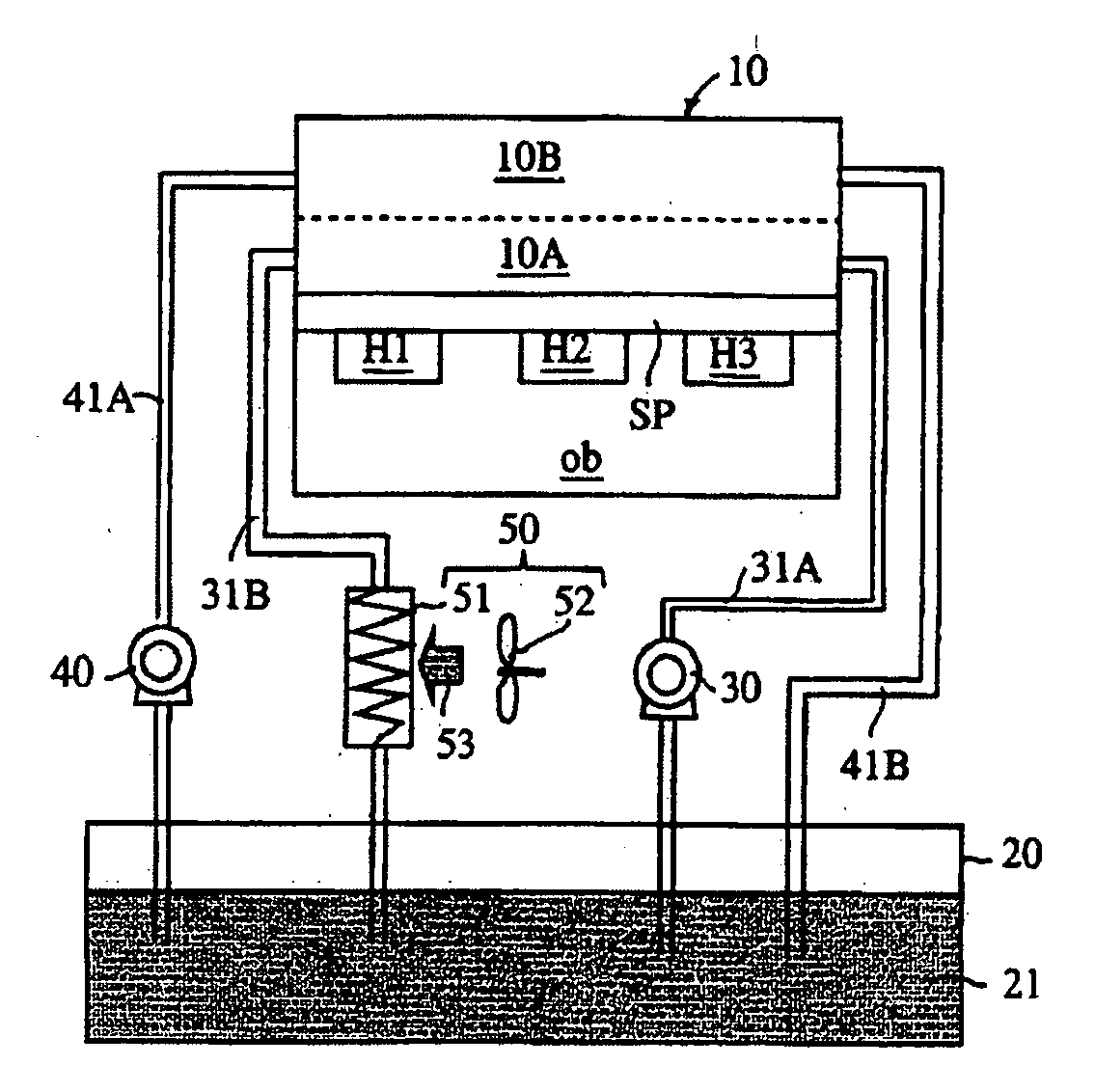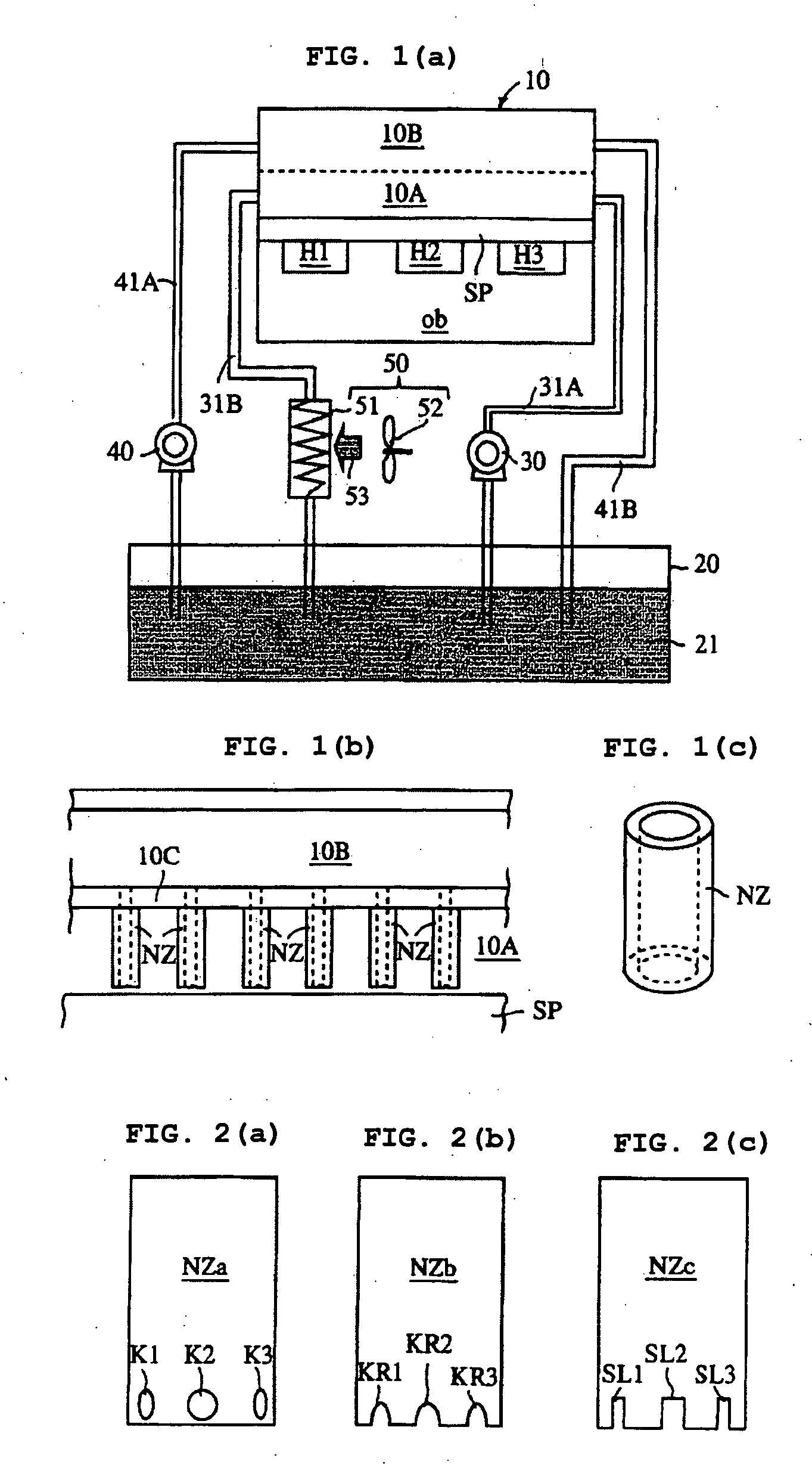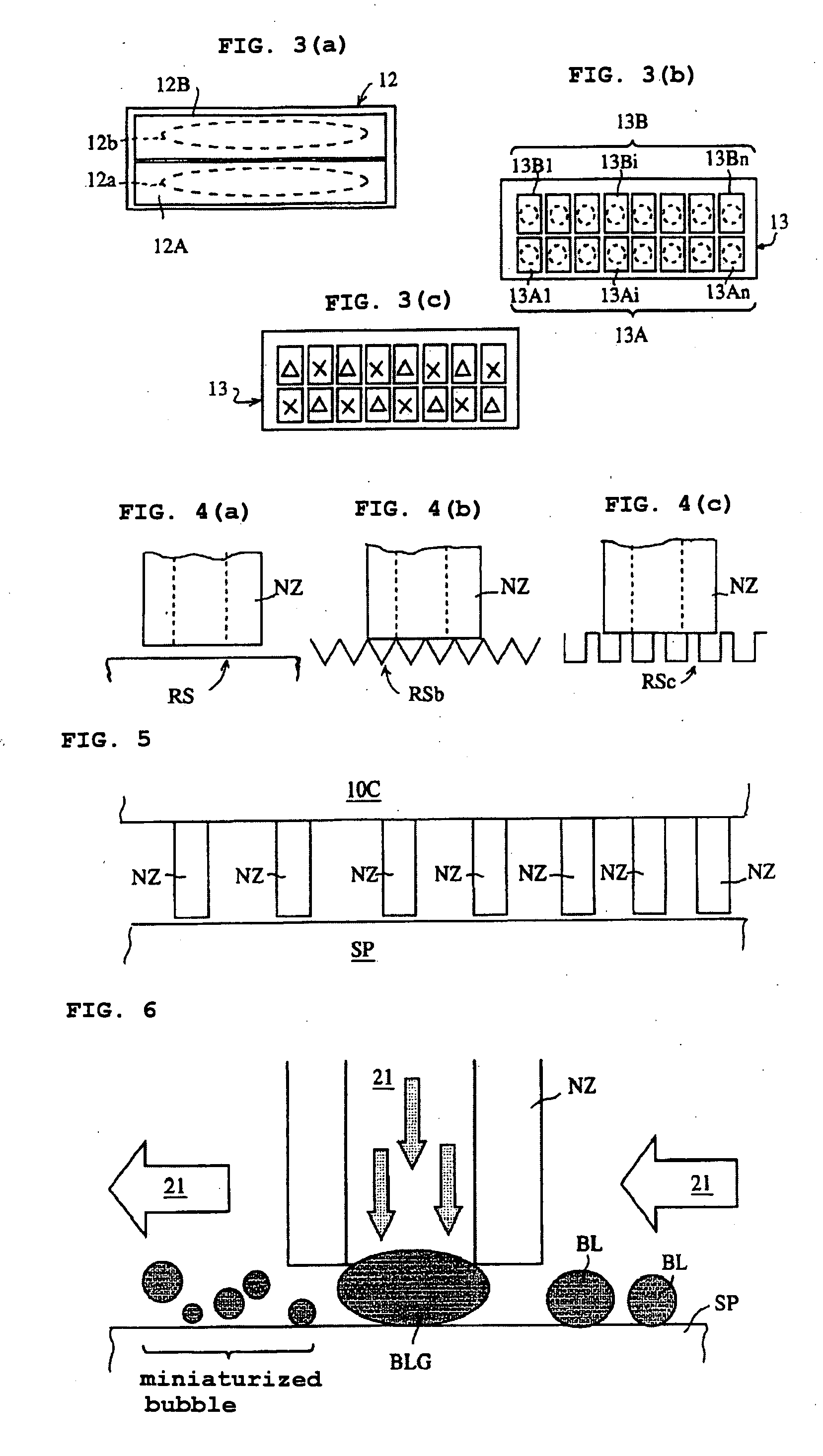Boil Cooling Method, Boil Cooling Apparatus, Flow Channel Structure, and Applied Technology Field Thereof
a technology of flow channel structure and boil cooling method, which is applied in the field of boil cooling method, boil cooling apparatus, flow channel structure, and applied technology, and can solve the problems of large growth rate of heat flux, increase of heat flux rate, and increase of quantity of bubbles generated at the surface of heating blocks
- Summary
- Abstract
- Description
- Claims
- Application Information
AI Technical Summary
Benefits of technology
Problems solved by technology
Method used
Image
Examples
example 1
[0192]The construction of an exemplary apparatus is substantially the same as that of the embodiment described according to FIG. 1. It has been assumed that an inverter, which is a semiconductor device, is used as the object to be cooled, and as the heat spreader of the inverter, the one 100 mm in width and 150 mm in length has been assumed.
[0193]The case has been assumed that the flow channel structure part as described according to FIG. 1 is constructed on the heat spreader, with the surface of the heat spreader made to serve as the cooling surface, by aluminum with the lengthwise direction of the heat spreader made to serve as the flow channel direction, the flow channel structure part is integrated with the inverter to be constructed as “the flow channel structure”, and both of the main flow channel and the sub-flow channel are respectively divided by partition walls in “an aligned grid form” in the direction perpendicular to the direction of flow of the cooling liquid and paral...
example 2
[0198]The passive cooling method and the active cooing method have been performed using the flow channel structure, which is substantially the same as the one described in Example 1 in construction except that notched type nozzles of FIG. 2(c) have been used and that stainless steel has been used as the material for the flow channel structure.
[0199]When “the passive cooling method” has been performed using distilled water as the cooling liquid and supplying the cooling liquid, under the condition that the liquid sub-cooling degree is 40K and the flow velocity to the main flow channel is 0.05 m / sec, from needle nozzles toward the cooling surface in the state that the cooling liquid exudes from the needle nozzles, the heat-removing heat flux of 60 W / cm2 has been obtained.
[0200]Thereafter, the temperature of the cooling surface and the heat flux have been detected with a temperature sensor installed at the cooling surface, and as the amount of heat generation of the cooling surface inc...
PUM
 Login to View More
Login to View More Abstract
Description
Claims
Application Information
 Login to View More
Login to View More - R&D
- Intellectual Property
- Life Sciences
- Materials
- Tech Scout
- Unparalleled Data Quality
- Higher Quality Content
- 60% Fewer Hallucinations
Browse by: Latest US Patents, China's latest patents, Technical Efficacy Thesaurus, Application Domain, Technology Topic, Popular Technical Reports.
© 2025 PatSnap. All rights reserved.Legal|Privacy policy|Modern Slavery Act Transparency Statement|Sitemap|About US| Contact US: help@patsnap.com



